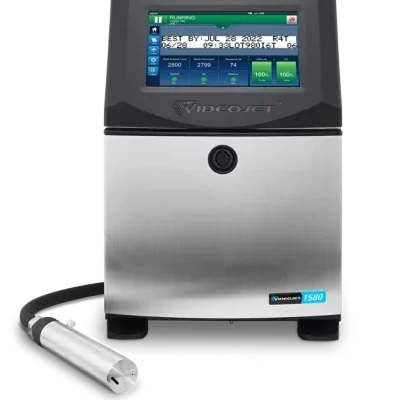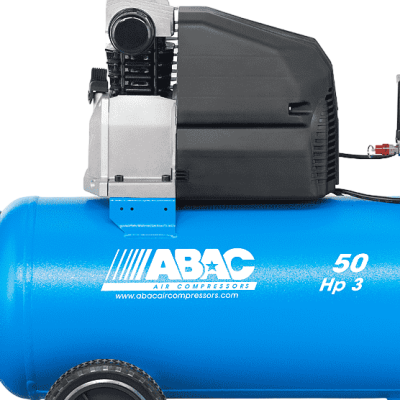Marketing Campaigns
All you need to know in order to launch your first multi-channel marketing campaign
Intro

Planning and strategizing marketing campaigns are crucial steps for any business aiming to achieve its goals effectively. This blog post dives deep into the essential aspects of campaign planning and strategy, providing valuable insights into the processes that can make or break a marketing effort. Understanding how to meticulously plan and strategize your campaigns ensures that resources are utilized efficiently, goals are met, and ROI is maximized. Whether you’re a seasoned marketer or a business owner, mastering these skills can lead to more successful and impactful campaigns. Read on to discover the secrets of effective campaign planning and how they can transform your marketing efforts.
What is a marketing campaign?
A marketing campaign is a coordinated series of activities designed to promote a product, service, or brand over a specific period. Unlike standalone ads, campaigns are strategic and multifaceted, often involving various channels such as social media, email, content marketing, and more. In B2B marketing, campaigns focus on building long-term relationships and demonstrating ROI through detailed, informative content. B2C campaigns, however, are often more emotion-driven, aiming to capture immediate consumer interest and drive quick sales.
The essential aspect of any marketing campaign is its strategy—understanding the target audience, setting clear objectives, and using the right mix of channels to achieve those goals. Effective campaign planning and strategy ensure that every element works harmoniously, delivering consistent messaging and maximizing impact.
A well-executed campaign can significantly boost brand awareness, engagement, and conversions. It begins with thorough research and data analysis to identify the best approaches for reaching the target audience. For B2B campaigns, this might involve detailed white papers, webinars, and personalized outreach. For B2C, it could mean engaging social media content, influencer collaborations, and compelling advertisements.
Campaigns also vary in scale and scope, from short-term promotions to long-term brand-building efforts. The success of a campaign hinges on its ability to connect with the audience on a meaningful level, driving action and achieving measurable results. Metrics such as conversion rates, engagement levels, and ROI are crucial in evaluating the effectiveness of a campaign.
What is campaign strategy?
A campaign strategy is a comprehensive plan that outlines how a business will achieve its marketing goals through coordinated actions and tactics. It begins with setting clear objectives, such as increasing brand awareness, generating leads, or boosting sales. The strategy involves understanding the target audience, analyzing their needs and preferences, and choosing the most effective channels to reach them.
Creating a campaign strategy involves several steps. First, define the campaign’s goals and key performance indicators (KPIs). Next, conduct market research to understand the competitive landscape and audience behavior. Then, develop a messaging framework that aligns with the brand’s value proposition and resonates with the audience. After that, select the appropriate marketing channels and allocate the budget. Finally, create a detailed execution plan with timelines, responsibilities, and metrics for success.
For example, let’s consider a B2B product like enterprise software. The campaign strategy might start with the goal of generating 200 qualified leads within six months. The target audience could be mid-to-large-sized companies in the finance sector. The market research phase would identify key competitors, industry trends, and pain points of potential customers. The messaging framework would highlight the software’s unique features, such as enhanced security and compliance capabilities.
The chosen channels might include LinkedIn for targeted ads, email marketing for nurturing leads, and webinars to demonstrate the software’s benefits. The budget would be allocated to these channels based on their potential ROI. The execution plan would detail the content creation process, ad schedules, email sequences, and webinar dates. KPIs might include the number of leads generated, engagement rates, and conversion rates.
How to create a marketing campaign strategy in b2b?
Define Campaign Objectives
Begin by setting clear, measurable objectives for the campaign. These objectives should align with the overall business goals and could include generating a specific number of qualified leads, increasing brand awareness in the industrial sector, or boosting sales of a particular machine model. It’s crucial to make these objectives SMART: Specific, Measurable, Achievable, Relevant, and Time-bound. For example, aim to increase sales by 15% within six months or generate 50 new leads per month. This clarity ensures that every campaign activity is directed towards achieving these targets.
Conduct Market Research
Market research is the backbone of a successful marketing campaign. Start by analyzing the competitive landscape to understand what other industrial machine companies are doing. Identify their strengths and weaknesses, and look for gaps in the market that your campaign can fill. Gather data on industry trends and customer needs through surveys, interviews, and secondary research. Understanding the pain points, preferences, and purchasing behaviors of potential customers will help in tailoring your campaign messages effectively.
Identify Target Audience
Clearly defining the target audience is crucial for any marketing campaign. For an industrial machine company, this audience might include manufacturing plants, construction firms, or logistics companies. Develop detailed buyer personas that include demographic information, job roles, challenges, and decision-making processes. Knowing your audience helps in creating targeted messages that resonate with them. For example, a manufacturing plant might be interested in how your machines can increase production efficiency and reduce downtime.
Develop Messaging Framework
Create a compelling messaging framework that highlights the unique value proposition of your industrial machines. Focus on the features and benefits that address the specific needs of your target audience. Your messaging should clearly communicate how your machines solve problems, improve processes, or offer a competitive advantage. Use testimonials, case studies, and data to support your claims. This builds credibility and trust with potential customers.
Select Marketing Channels
Choosing the right marketing channels is critical to reaching your target audience. For B2B industrial machines, LinkedIn might be effective for professional networking and lead generation. Industry-specific websites and forums can be used for targeted advertising. Email marketing can nurture leads through regular updates and offers. Trade publications and trade shows provide platforms for direct engagement. Each channel should be chosen based on where your audience spends their time and seeks information.
Allocate Budget
Determine the budget for your marketing campaign and allocate funds across the chosen channels. Consider the cost-effectiveness of each channel and the potential return on investment (ROI). Ensure that the budget supports the campaign objectives without overspending. For example, if LinkedIn ads have previously yielded high-quality leads, allocate more funds there. Regularly review and adjust the budget based on performance to ensure optimal spending.
Create Content
Content is king in marketing. Develop high-quality, engaging content tailored to each marketing channel. This could include whitepapers, case studies, webinars, videos, blog posts, and social media updates. Ensure that the content is educational and demonstrates the benefits of your industrial machines. For instance, a case study showing how a client increased production efficiency using your machines can be very persuasive.
Plan Campaign Timeline
Establish a detailed timeline for the campaign, outlining when each activity will occur. This includes content creation, ad placements, email sends, and participation in trade shows. The timeline should include key milestones and deadlines, ensuring that all team members are aligned and aware of their responsibilities. A well-planned timeline helps in coordinating efforts and maintaining momentum throughout the campaign.
Implement Campaign
Execute the campaign according to the plan. Launch ads on selected platforms, distribute content via email and social media, and engage with prospects at trade shows and events. Regularly monitor the campaign to ensure it stays on track and make adjustments as needed. Effective implementation requires coordination and communication among all team members to ensure seamless execution
Monitor and Optimize
Track the performance of the campaign using analytics tools. Monitor key metrics such as website traffic, lead generation, engagement rates, and conversion rates. Use this data to identify what’s working and what isn’t. Make necessary adjustments to improve performance. For example, if a particular ad is underperforming, tweak the messaging or targeting. Continuous optimization ensures that the campaign remains effective and achieves the desired results.
Evaluate Results
After the campaign concludes, evaluate its overall success against the initial objectives. Analyze the data to determine the return on investment (ROI), identify successful tactics, and understand areas for improvement. Use these insights to refine future campaigns. For example, if the campaign successfully increased sales by 20%, identify the strategies that contributed to this success and consider replicating them in future efforts.
Resources required for successful campaigns
Executing a successful marketing campaign requires a combination of various resources, time, money, people, skills, and tools. First, a dedicated team is essential. This includes a campaign manager to oversee the project, content creators to develop engaging materials, designers to ensure visual appeal, and data analysts to track performance. Depending on the campaign’s scale, you may also need copywriters, social media specialists, and email marketing experts.
Time is another critical resource. Planning a campaign can take several weeks to months, depending on its complexity. This phase involves market research, audience segmentation, and developing a detailed strategy. Once the planning is complete, the execution phase also requires adequate time for creating, testing, and optimizing various campaign elements to ensure they perform well.
Financial resources are crucial for any campaign. Budget allocation covers costs such as advertising spend on platforms like Google Ads or Facebook, production costs for high-quality content, and tools for automation and analytics. A well-planned budget ensures that every dollar is spent efficiently to maximize return on investment.
Skills and expertise are vital for successful campaigns. This includes strategic thinking to develop effective plans, creative skills for compelling content, technical skills for using various marketing tools, and analytical skills for measuring and optimizing performance. Each team member should bring specialized skills to the table to contribute to the campaign’s success.
Essential tools for campaign execution include marketing automation platforms like HubSpot or Marketo, which streamline processes and ensure consistency across channels. Analytics tools like Google Analytics or SEMrush are crucial for tracking campaign performance and making data-driven decisions. Social media management tools like Hootsuite help manage multiple platforms simultaneously, while email marketing tools like MailChimp or SendGrid enable targeted and effective communication with the audience.
Moreover, customer relationship management (CRM) systems like Salesforce are indispensable for managing interactions with leads and customers, ensuring that the campaign nurtures prospects effectively. Collaboration tools like Slack or Trello help keep the team coordinated and on track with project timelines and deliverables.
Resource allocation also involves setting realistic timelines and milestones. A campaign’s success often hinges on meticulous planning, which includes setting clear goals, timelines, and responsibilities for each team member. Regular check-ins and updates ensure that the campaign progresses smoothly and allows for any necessary adjustments along the way.
Another critical aspect is the ability to adapt and pivot. Campaigns may need adjustments based on real-time feedback and performance metrics. Flexibility in the campaign strategy allows for optimization and maximizes impact. This requires ongoing analysis and willingness to experiment with different approaches until the desired outcomes are achieved
In conclusion, executing a successful marketing campaign is a complex task that requires a well-coordinated effort from a skilled team, adequate time, financial investment, and the right tools. By understanding and managing these resources effectively, businesses can create and execute campaigns that drive significant results and achieve their marketing objectives.
Some of my clients' case studies
What are the success criterias of a marketing campaign
Measuring the success of a marketing campaign, particularly in the B2B world, involves various criteria that provide a comprehensive view of the campaign’s effectiveness. One of the primary metrics is the return on investment (ROI). ROI measures the revenue generated relative to the campaign’s cost, providing a clear indicator of financial success. Another key metric is the lead generation rate, which tracks the number of qualified leads generated through the campaign. This is especially crucial in B2B marketing where lead quality often outweighs quantity.
Engagement metrics, such as click-through rates (CTR) and engagement rates on social media platforms, provide insights into how well the campaign content resonates with the target audience. High engagement suggests that the messaging and content are effective and engaging.
Sales cycle length is another critical measure in B2B marketing. A successful campaign should ideally shorten the sales cycle by efficiently moving leads through the funnel. Customer lifetime value (LTV) is also important, as it measures the total revenue a business can expect from a single customer account. Campaigns that attract high-LTV customers are deemed more successful.
Engagement metrics, such as click-through rates (CTR) and engagement rates on social media platforms, provide insights into how well the campaign content resonates with the target audience. High engagement suggests that the messaging and content are effective and engaging.
Sales cycle length is another critical measure in B2B marketing. A successful campaign should ideally shorten the sales cycle by efficiently moving leads through the funnel. Customer lifetime value (LTV) is also important, as it measures the total revenue a business can expect from a single customer account. Campaigns that attract high-LTV customers are deemed more successful.
Brand awareness and brand perception metrics can also gauge success. Increased brand recognition and positive sentiment indicate that the campaign effectively boosts the brand’s presence and reputation in the market.
Customer feedback and satisfaction are qualitative measures that offer valuable insights into the campaign’s success. Positive feedback and high satisfaction rates often lead to higher retention and loyalty.
Market share growth can also be a significant indicator. A campaign that increases a company’s market share demonstrates effective competitive positioning and successful outreach to the target audience.
Market share growth can also be a significant indicator. A campaign that increases a company’s market share demonstrates effective competitive positioning and successful outreach to the target audience.
Finally, the alignment of marketing and sales teams, often facilitated by marketing campaigns, is crucial. Successful campaigns foster better collaboration and communication between these teams, ensuring that marketing efforts translate effectively into sales outcomes.
In summary, measuring the success of a marketing campaign involves a blend of quantitative and qualitative metrics, each providing a piece of the overall effectiveness puzzle. By tracking and analyzing these metrics, businesses can refine their strategies, improve future campaigns, and ultimately drive better business results.
Enjoying the ride and want to connect?
Get in touch with me using that red button and we can discuss what you have in mind!
Use this form to book a Call with me
Example of great marketing campaigns from b2b world
Salesforce, a leading customer relationship management (CRM) software company, launched a highly effective B2B marketing campaign known as the “Trailblazer” campaign. This campaign was designed to showcase the success stories of real customers using Salesforce’s solutions, thereby building credibility and trust within the B2B community.
Objective
The primary objective of the Trailblazer campaign was to position Salesforce as a partner in innovation and digital transformation, highlighting how their CRM solutions could help businesses achieve their goals. This was aimed at driving brand loyalty, increasing customer engagement, and ultimately boosting sales.
Strategy and Planning
The campaign strategy revolved around storytelling. Salesforce identified and highlighted the “Trailblazers,” which were their most innovative and successful customers. The idea was to create relatable and inspirational stories that other businesses could connect with. Salesforce used various content types, including case studies, video testimonials, blog posts, and social media content, to tell these stories.
Execution
- Content Creation: Salesforce produced high-quality video testimonials and detailed case studies featuring their Trailblazers. These pieces of content demonstrated the tangible benefits and successes achieved by using Salesforce’s CRM solutions.
- Multi-Channel Distribution: The campaign was launched across multiple channels. Videos were shared on platforms like YouTube, LinkedIn, and Twitter. Blog posts and case studies were published on Salesforce’s website and promoted via email newsletters.
- Event Integration: Salesforce integrated the Trailblazer stories into their major events, such as Dreamforce, their annual conference. These stories were showcased in keynote presentations, breakout sessions, and networking events, allowing attendees to hear firsthand accounts of success.
- Social Media Engagement: Salesforce leveraged social media to amplify the reach of their Trailblazer stories. They created hashtags, engaged with followers, and encouraged their community to share their own stories of success using Salesforce products.
Results
The Trailblazer campaign was a resounding success. It significantly increased engagement on Salesforce’s digital platforms, with high levels of interaction on social media posts and video content. The campaign also drove a substantial increase in traffic to Salesforce’s website, particularly to the case studies and customer stories sections.
- Storytelling: The power of storytelling in B2B marketing can create strong emotional connections and build trust with potential customers.
- Multi-Channel Approach: Utilizing a variety of channels ensures a broader reach and more touchpoints with the target audience.
- Customer-Centric: Focusing on real customer success stories adds authenticity and credibility to the marketing efforts.
- Event Integration: Combining digital and physical event strategies can enhance the impact and engagement of a campaign.
Conclusion
Understanding how to plan and execute outstanding marketing campaigns is crucial for the success of any marketing organization within a company. A well-thought-out and strategic approach ensures that every aspect of the campaign is aligned with business goals, maximizing the potential for positive outcomes. The Salesforce “Trailblazer” campaign exemplifies the power of effective storytelling, multi-channel distribution, and customer-centric marketing.
By carefully crafting your campaign strategy, considering all necessary resources, and continuously measuring success, your business can achieve remarkable results. Whether you’re in B2B or B2C, investing time in detailed campaign planning pays off by driving engagement, building brand loyalty, and ultimately increasing revenue.
For more insights on creating successful marketing campaigns and other marketing strategies, be sure to subscribe to my blog. Stay informed and equipped to enhance your marketing efforts and drive your business forward.
Also Check Out Some of The Services That I Provide:
Audit
of your website, perfomance and brand campaigns, as well analysis of CJM and Funnel Management.
Consulting
Detailed recommendations based on analysis with handpicked tools and solutions.



